SPIRULINA- The complete Food For Everyone
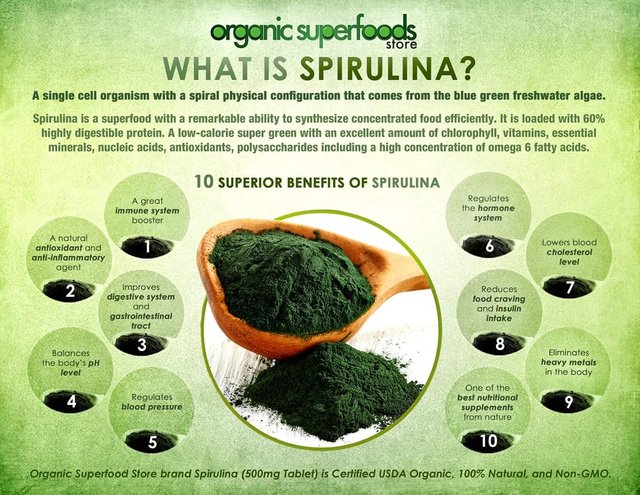
Spirulina is the healthiest food on earth that most people does not know. "One (1) gram of it (spirulina) is equivalent to nutrients of 1,000 grams or 1 kilogram of assorted balanced vegetables and fruits" -UNITED NATIONS on Spirulina
“Let food be thy medicine, and medicine thy food” – Hippocrates
What is Spirulina 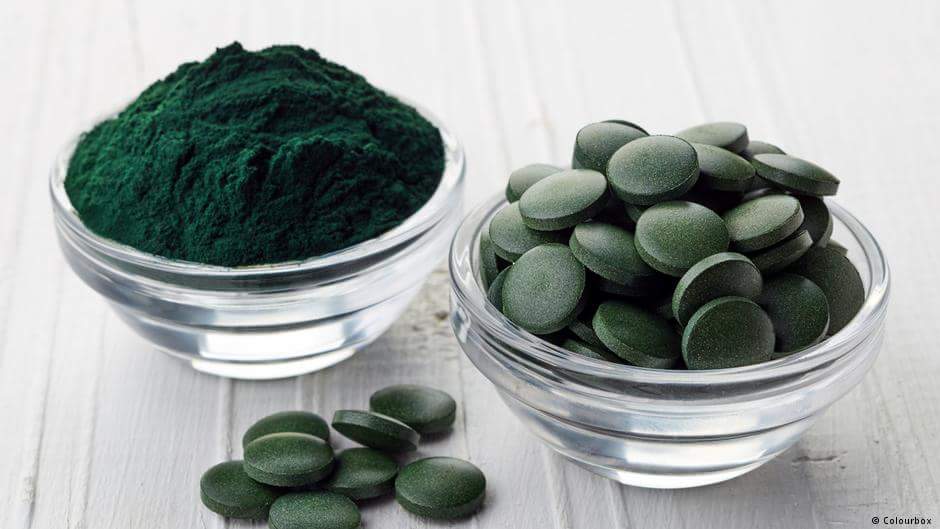
Spirulina, scientifically known as "Arthrospira Platensis", is filamentous micro-bacteria from the Cyanobacteria family that grows naturally in warm, fresh water-bodies around the world. It is has been used as a significant food source for centuries and considered a superfood due to its powerful health benefits. It is also known as blue-green algae because of its color, but strictly speaking, it is bacteria and the ancestor of algae. Brand of spirulina in Philippines is the Spirulina Filipina which is cultivated in man-made ponds in Subic, Zambales, which replicate the natural conditions of lakes where Spirulina initially and still thrive. Spirulina comes in capsule (powder inside), tablet, granule and powder forms.
What nutrients are in Spirulina? Why is it considered as the only complete and natural single food source of all essential nutrients?
Spirulina contains more than 100 natural bio chelated (easily absorbed) nutrients. Spirulina is packed with protein (69%) and amino acids, including the essential fatty acid gamma linolenic acid (GLA), omega 3, 6, and 9s, chlorophyll, iron, and vitamins B-1 (thiamine), B-2 (riboflavin), B-3 (nicotinamide), B-6 (pyridoxine), B-9 (folic acid), vitamin C, vitamin D, vitamin A and vitamin E. It is also a source of potassium, calcium, chromium, copper, iron, magnesium, manganese, phosphorus, selenium, sodium and zinc.
It is considered the only complete single source of all essential nutrients because it has all the essential amino acids (8), vitamins, minerals, good sugars, and the all-important blue-pigment, phycocyanin, found only in Spirulina Filipina, which is a potent anti-inflammatory, cancer preventer, and the greatest protector of the liver.
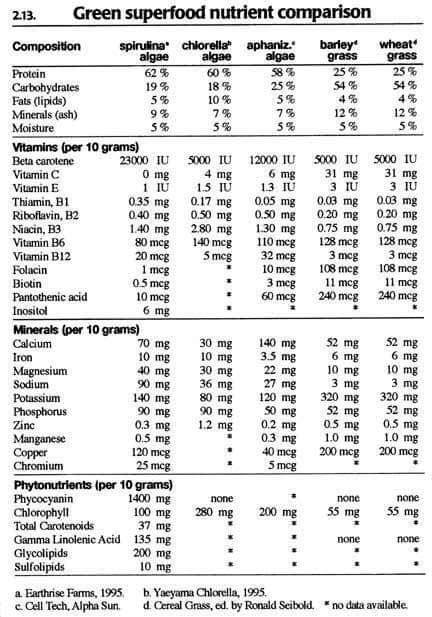
What are Spirulina’s main health benefits?
▪ Better nutrition – Spirulina is a good source of protein, vitamins, minerals, and essential fatty acids, especially rich in beta-carotene and vitamin K
▪ Boost Immune Function – Studies show that Spirulina may improve your immune system.
▪ Boost energy – The easily absorbable good complex sugars like Glucose and Rhamnose in Spirulina Filipina provide instant energy
▪ Prevention of Cancer – Studies have shown that Spirulina enhances Natural Killer Cells (NKCs) in the human body that attack and destroy cancer cells
▪ Cholesterol regulator – The essential fatty acids in Spirulina Filipina promote good cholesterol
▪ Pain Management – GLA or Gamma Linolenic Acid in Spirulina Filipina is a COX-2 inhibitor that helps in pain relief
▪ Diabetes Management – 17 specific nutrients in Spirulina Filipina help regulate proper sugar synthesis. Some of these nutrients are Chromium, Magnesium, Alpha Lipoic Acid, and B Vitamins
▪ Heart disease prevention – The amino acid Arginine in Spirulina Filipina creates nitric oxide (NO) that dilates blood vessels to ensure good circulation and blood pressure. The blue pigment, phycocyanin, in Spirulina Filipina prevents heart attacks and strokes due to its strong antioxidant and anti-inflammatory properties.
▪ Gastro-Intestinal Health and Natural detoxification – The amino acid Glutamine in Spirulina Filipina repairs stomach and intestinal lining. Its rich chlorophyll content ensures proper digestion and elimination of waste and heavy metals like mercury and arsenic.
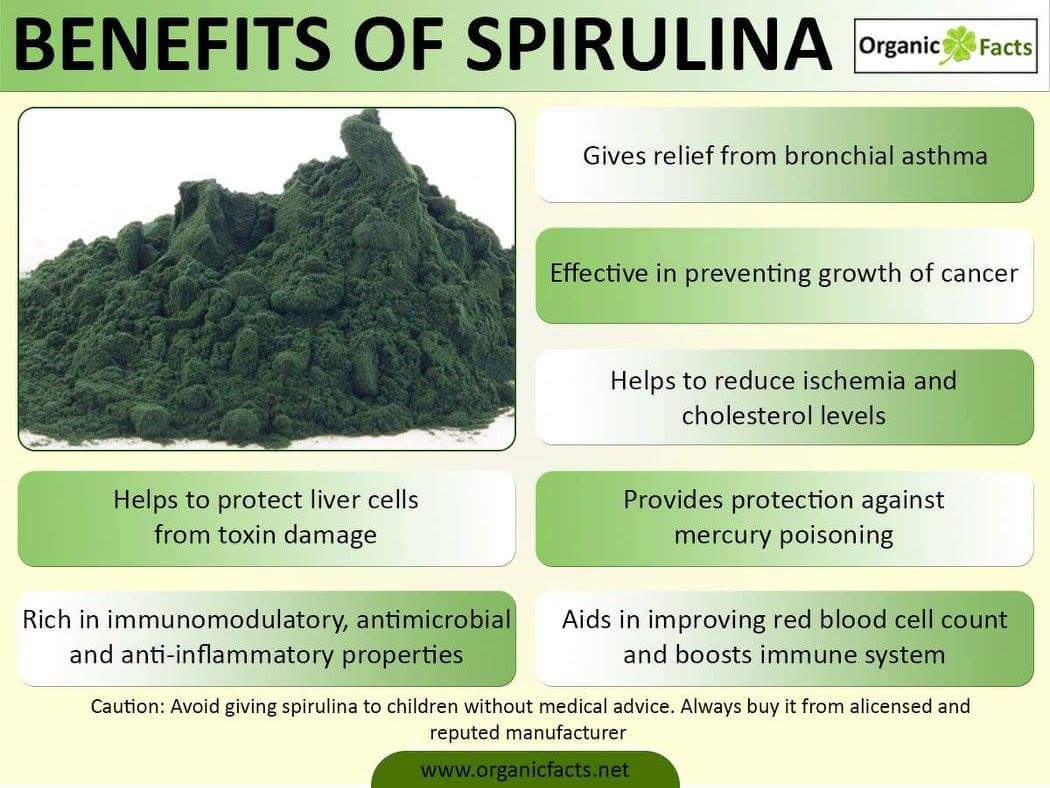
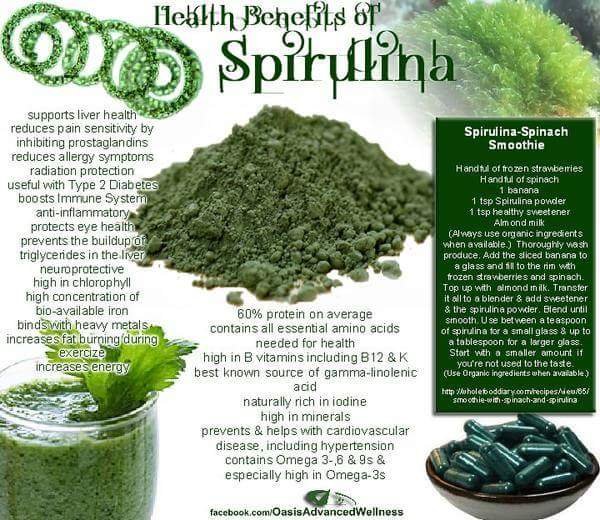
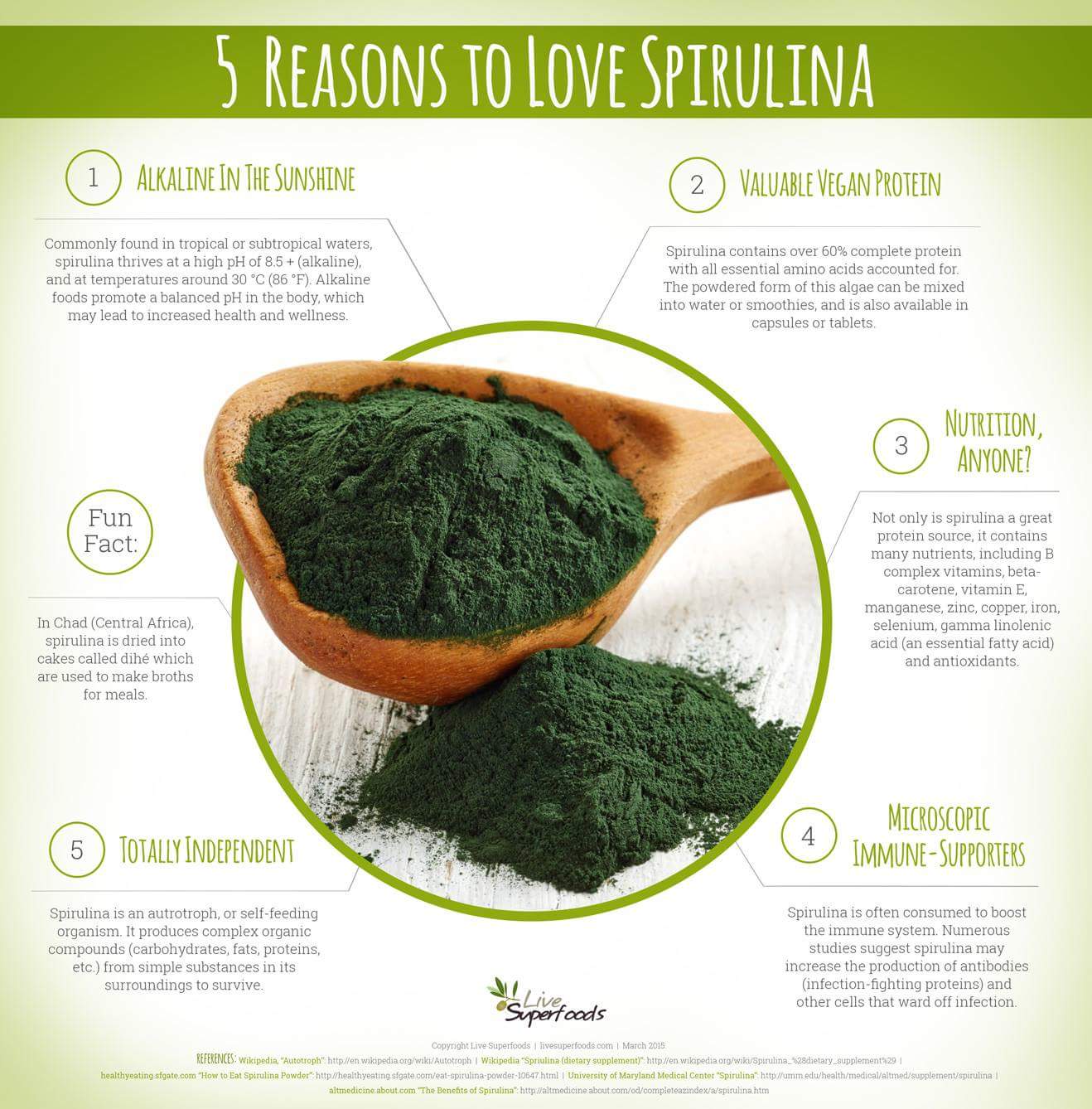
Five Scientific Proven Benefits of Spirulina
Due to a wide range of healthy components, spirulina can significantly improve our health. Let’s find out how:
1. Blood Sugar Control
Several animal studies have revealed that spirulina can lower blood sugar levels. In some cases, spirulina was more effective than some diabetes drugs, such as Metformin. Not all studies related to spirulina were conducted on animals. For example, a group of scientists from the Department of Foods and Nutrition at MS University of Baroda in India conducted a study which included 25 participants with Type 2 diabetes. Participants received 2 grams of spirulina a day for 2 months.
Results of the study, which were published in the Journal of Medicinal Food, showed that two-month supplementation with spirulina resulted in appreciable lowering of fasting blood glucose and postprandial blood glucose levels.
2. Muscle Strength & Endurance
Your fitness trainer probably mentioned spirulina to you or you have read something about it while you were browsing for tips about boosting your energy when exercising. We all know that feeling when, instead of feeling reenergized and refreshed after a workout, we feel fatigued instead. This fatigue is often caused by exercise-induced oxidative damage. Certain foods contain high levels of antioxidants which help us minimize that damage. Berries and other fruits and vegetables are great for this, but spirulina can be added to your routine even more easily. Spirulina’s effect on athletic performance was even scientifically proven by a group of scientists from the Institute of Human Performance and Rehabilitation, Center for Research and Technology from Trikala, Greece. The study included 9 moderately trained males who received either 6 grams of spirulina a day or a placebo for 4 weeks.
The findings of the study were published in the Medicine and Science in Sports and Exercise and they showed that spirulina supplementation induced a significant increase in exercise performance. Another study, conducted at the Guru Nanak Dev University in India, showed that spirulina increased muscle strength in participants.
With improved muscle strength and endurance you can reach your desired fitness level and body shape more easily, which is a great motivation to get to the gym and start exercising.
3. Effective Against Anemia
There are many types of anemia, but the most common one involves the reduction of hemoglobin, or red blood cells. Anemia is also associated with prolonged feelings of weakness and fatigue. It is widely believed spirulina is beneficial for hemolytic anemia and this was confirmed by a study conducted by a group of scientists from the Division of Rheumatology, Allergy and Clinical Immunology at the University of California. The study included 40 senior citizens with a history of anemia. The results showed that spirulina supplementation increased the hemoglobin content of red blood cells. Additionally, immune function was also improved.
4. Improves Symptoms of Allergic Rhinitis
Allergic rhinitis is indicated by the inflammation of nasal airways. This allergy is triggered by pollen, animal hair, wheat dust, and other environmental factors. Spirulina is a popular method for allergic rhinitis treatment and its positive effective on this allergy was documented in a study conducted by the Department of ENT at Eskisehir Osmangazi University Medical Faculty in Turkey. The study included 127 participants who received 2 grams of spirulina a day. The results showed that spirulina consumption significantly improved the symptoms and physical findings compared with a placebo. Spirulina was beneficial for relieving all symptoms of allergic rhinitis including itching, sneezing, nasal discharge, and nasal congestion.
The findings of the study were published in the European Archives of Otorhinolaringology.
5. Reduces Blood Pressure
The ability to reduce blood pressure is one of the most important helpful benefits of spirulina. High blood pressure is a factor that causes numerous diseases, including heart attack, chronic kidney disease, and stroke. Spirulina supplementation has the ability to lower blood pressure, which was documented in a study conducted by the Department of Internal Medicine at the Naval Hospital of Creete, Greece. The study included 52 participants (32 men and 20 women). The findings, which were published in the Journal of the Science of Food and Agriculture, showed that spirulina supplementation of 1 gram a day has powerful hypolipidaemic effects. Basically, after a 3-month research period, levels of triglycerides, LDL cholesterol, and total cholesterol were significantly decreased. It can be safely concluded that spirulina is beneficial for our heart health as well.
What makes Spirulina Filipina different from just eating fruits and vegetables?
One gram of Spirulina is equivalent to one Kilogram of fruits and vegetables (NASA). To put that into perspective, just a mere 3 grams of Spirulina provide the following nutrition of:
550 apples
Calcium in 7 glasses of milk
Vitamin A of 25 raw carrots
250% more of B Vitamins in beef liver
Iron of 15 pieces of Spinach
3x more Vitamin E than Wheat Germ (considered as one of the greatest sources of Vitamin E)
Can pregnant women take Spirulina?
Yes, and it is highly encouraged that they do take Spirulina Filipina, and in greater amounts, since two bodies are being fed. The mother and the child in the womb are “sharing” the nutrients from common
food, and one or both suffer. The most important nutrients for mother and baby are Vitamin E, folic acid, Iron and Selenium. In fact, some studies have shown that a deficiency in Selenium is one major cause of miscarriages.
Are there any side effects when one takes Spirulina?
When one talks about side effects, two concepts must be differentiated. Healing effects and negative side effects. When the body is healing, certain manifestations appear, like slight pain, headache, and dizziness. A few may experience this when initially taking Spirulina Filipina, or for longer periods when one is healing from a major disease. A deeper explanation to this is that when toxins in the body are dislodged from certain areas or organs, these toxins still circulate around the body before they are eventually eliminated through the stool, sweat or phlegm. While these toxins are still circulating, these healing effects or manifestations remain. So, if one is trying to heal from a major disease, he/she must expect longer periods of healing manifestations. Negative side effects are alarming. Fainting or passing out, severe inability to breathe could be considered as negative side effects. In over 40 years of research, scientists from all over the world have not reported negative side effects of Spirulina, so long as these were cultivated properly. Food does not have negative side effects. Spirulina Filipina is food.
There are many brands of Spirulina. Why is Spirulina Filipina the best choice?
The Spirulina Brand with the highest PHYCOCYANIN (Blue-Pigment) content in the world: SPIRULINA FILIPINA!
On physical and visual tests comparing Spirulina Filipina and other brands, we have come to the conclusion that Spirulina Filipina contains the most amount of the blue pigment called phycocyanin. To test any Spirulina brand, the four pigments must be demonstrated and clearly and distinctly visible: Maroon, Green, Yellow and Blue. Unfortunately, some tests reveal that some brands are missing the blue and yellow pigments. All brands of spirulina look the same in dried form: green or dark green, so tests are important to find out which Spirulina has the most nutrients, which are correlated to pigment content.
There are also two types of strain of Spirulina available in the market: Spirulina Platensis and Spirulina Maxima. Both have excellent nutritional values, but S. Platensis, the strain of Spirulina Filipina, contains more of the blue pigment, while S. Maxima contains more of the red pigment. It is our belief that the blue pigment is the most important pigment. S. Platensis also contains more the most important essential fatty acid, an Omega-6 fatty acid called Gamma Linolenic Acid, whereas S. Maxima contains more Palmitic acid.
The advantage of Spirulina Filipina over other Spirulina brands:
1. Spirulina Filipina contains 50% more of the blue pigment, Phycocyanin, as compared to all other brands (physical tests).
2. Spirulina Filipina has the complete set of pigments: blue, green, maroon, and yellow. Some brands have missing nutrients, like the blue or yellow, or both. As stated earlier, all Spirulina appear green or dark green in dried form; and only through physical demonstration using water and oil reveal the pigment content of Spirulina in dried form.
3. Spirulina Filipina uses a five-step water filtration system to ensure its ponds and Spirulina Filipina free from toxins.
4. Spirulina Filipina uses small ponds covered in greenhouses. Many Spirulina brands are cultured in large open ponds.
5. Spirulina Filipina boasts of using only “mother strains” in culturing Spirulina. Most just transfer cultured Spirulina from pond to pond.
6. Spirulina Filipina is cultured in the pollution-free surroundings of Zambales hills.
7. Spirulina Filipina uses the slow-drying method (between to 9 to 18 hours) to ensure maximum retention of nutrients.
8. Spirulina Filipina tablets are free from waxes, extenders and fillings to ensure that one consumes only 100% pure Spirulina Filipina.
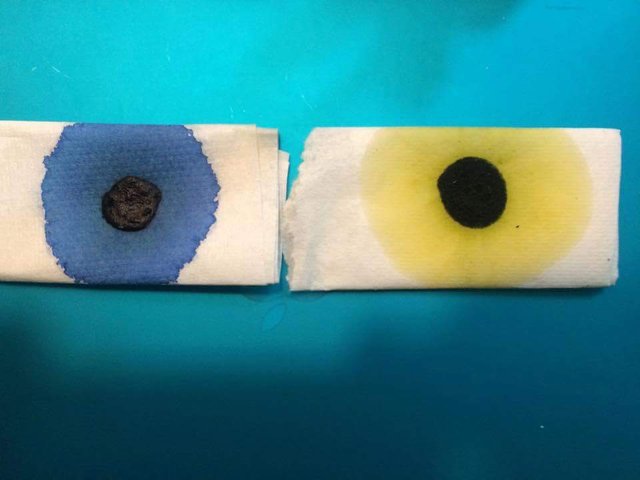 design of spirulina is perfected only in Spirulina Filipina®
✔Comparison of yellow and blue pigments (comparison of 500 mg tablets)
✔The mechanisms mandated by nature are clear: A solid blue pigment must appear when water is mixed with spirulina, and a solid yellow pigment must be revealed when oil is mixed with spirulina. This design is perfected only in Spirulina Filipina.
design of spirulina is perfected only in Spirulina Filipina®
✔Comparison of yellow and blue pigments (comparison of 500 mg tablets)
✔The mechanisms mandated by nature are clear: A solid blue pigment must appear when water is mixed with spirulina, and a solid yellow pigment must be revealed when oil is mixed with spirulina. This design is perfected only in Spirulina Filipina.
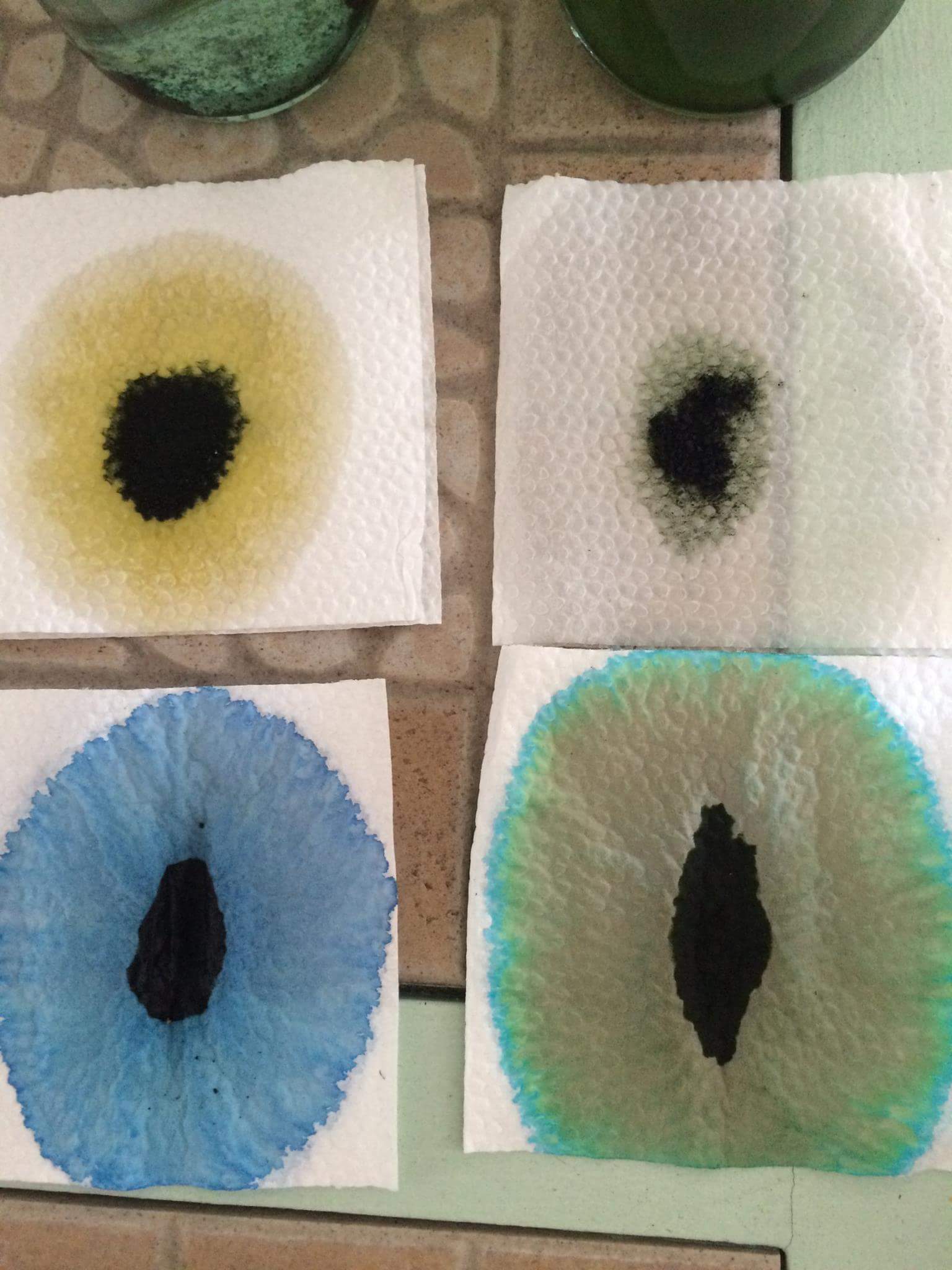 Left column: Spirulina Filipina
Right column: Spirulina brand
Left column: Spirulina Filipina
Right column: Spirulina brand
Imperfect design and mechanisms mean imperfect effect and benefits on the human body.
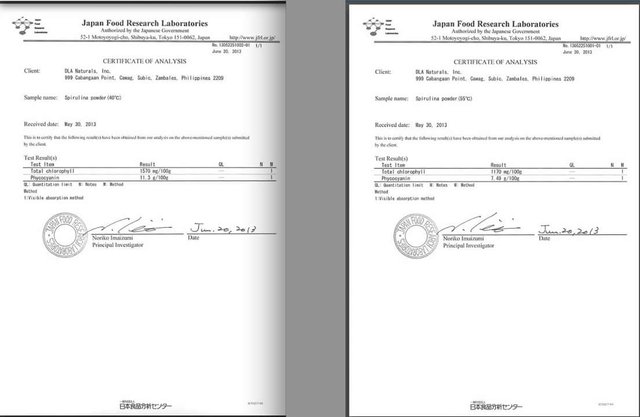 Independent and non-biased Japanese analysis confirms that Spirulina Filipina contains between 7.49 to 11.3% of this magnificent blue pigment, its main ammunition that only it contains to combat cancer and all other diseases! No other spirulina brand in the world can match its PYCOCYANIN content!
Independent and non-biased Japanese analysis confirms that Spirulina Filipina contains between 7.49 to 11.3% of this magnificent blue pigment, its main ammunition that only it contains to combat cancer and all other diseases! No other spirulina brand in the world can match its PYCOCYANIN content!
What makes Spirulina different from Multi-Vitamin supplements?
There are two classifications of supplements: non-formulated and formulated. Spirulina Filipina belongs to the non-formulated or truly natural supplements (food) because, as mentioned earlier, no human alterations or unnatural interventions of any form are involved in the culturing of Spirulina Filipina, which usually distort the normal occurrences and processes in nature. Spirulina Filipina’s cultivation in pristine waters and closed greenhouse conditions replicate the natural habitat of spirulina, found in the lakes of central Africa. Because of pollution, it is not advisable to consume Spirulina taken from the natural lakes and ponds.
That said, the nutrients in Spirulina Filipina are truly “natural.” Only natural nutrients are fully absorbed by the human body and fully recognized by our cells. Multi-vitamins are processed nutrition and not completely absorbed and seem “foreign” and “strange” for our cells. Although these may benefit the human body in many ways especially when it comes to severe diseases—and usually in large dosages and short periods of time--most formulated supplements cannot be consumed daily or for long periods of time since these are not fully absorbed. Since absorption is incomplete, much residue is left, potentially compromising kidney and liver functions. It is always best to get nutrition from whole foods like Spirulina Filipina.
What is the intake dosage for Spirulina?
All should start with slow and low intake of Spirulina Filipina: one to two grams per days until the body is able to adjust the full and “renewed” nutrition it has long been craving for and missing in modern food, which only Spirulina Filipina can complete.
-toddlers: half-gram per day
- children: one gram per day
- teenagers who are sedentary: 2 grams per day
- teenagers who are active in sports: 3-5 grams per day
- healthy adults: 3-5 grams per day
- sick: 10 grams per day
- pregnant: 7 grams per day
- adult athletes: 20 grams per day
Does Spirulina Filipina contain toxins?
Third-party toxicology tests on Spirulina Filipina have confirmed that it is free from all pathogens and heavy metals.
Can Spirulina Filipina be taken with medications?
In principle, anything taken with Spirulina Filipina, such as food, supplements and medication, are ENHANCED by Spirulina Filipina, which means their effects are heightened, making them more effective. 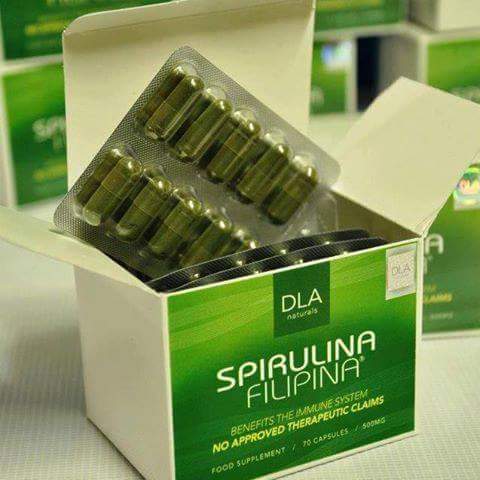
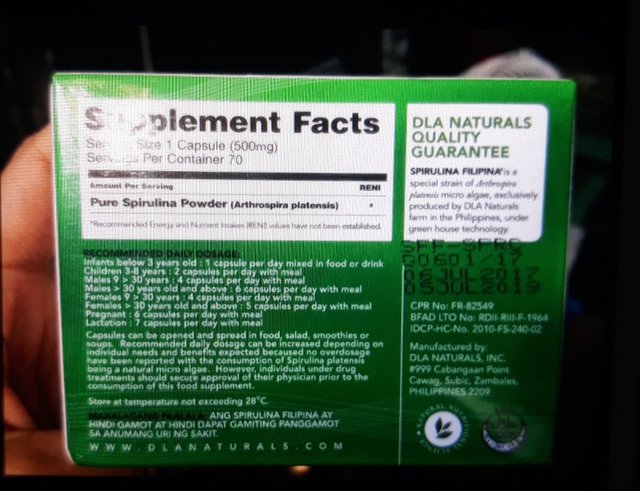
Finally, we can conclude that due to its numerous health benefits, spirulina truly deserves the title of superfood. Hopefully, you found all the amazing properties of spirulina listed above inspiring enough to include it into your diet as well.
SOURCES:
https://www.facebook.com/groups/214376715241999/permalink
http://www.collective-evolution.com/2015/10/06/5-scientifically-proven-benefits-of-spirulina/
Dami pala benefits niyan. Thanks for sharing. It's good to know.
Narining ko na to sa mga jw friends ko din. Mganda daw ito. 😊
yes, maganda sya, been using this since 2010, and anak ko spirulina baby, at 8y/o skin nya baby skin pa rin, dahil yan sa spirulina...
Maganda Kung ganon magiging baby skin ako Kung gagamit niyan. hehehe joke..
Thank you po for sharing 😊
welcome, i believe that everyone should know about this...
Narinig ko narin yan, healthy daw talaga yan!
Thanks for the healthy tips 😊
What a come back you have done after a long pause from your
work, about the spirulina I have heard when I was involved in the
business of Amway and some health-related knowledge I gained at
that time many companies from Japan come to market their product same like this.
Thanks for sharing it here and keep steeming
@maujmasti
thank you! i just have a short break, and am back now. and about spirulina, the one cultivited here in philippines called Spirulina Filipina, is the most affordable one having the highest contain of phycocyanin compatr to other brands. if ever you know someone who need it just contact me. we also have other alternative supplements that have been proven effective in chronic diseases, now in thousands of testimonies from being sickly and dying to healthy living.
Are they costly as I heard they are very costly in $$$
most spirulina products really cost much, but the spirulina filipina is not, because the one who owns the farm & laboratory is not after on what he earns, he wanted to provide he just wanted to provide good health to the people, and help those those suffering diseases. actually a box of 70 capsules/500mg only cost $20. it is cheaper than being confined for days in a hospital. and i have been using this and my family since 2010.
Thank you for info . Good job 👍👍👍
welcome & thanks too.